Transforming a 990 sq ft HDB flat into a ‘little Japan’ – complete with an onsen
CNA Lifestyle’s Making Room series looks at small homes with big transformations. This week, we visit a unique home with “sights” of Mount Fuji, a tatami room and a version of a Japanese bathhouse.
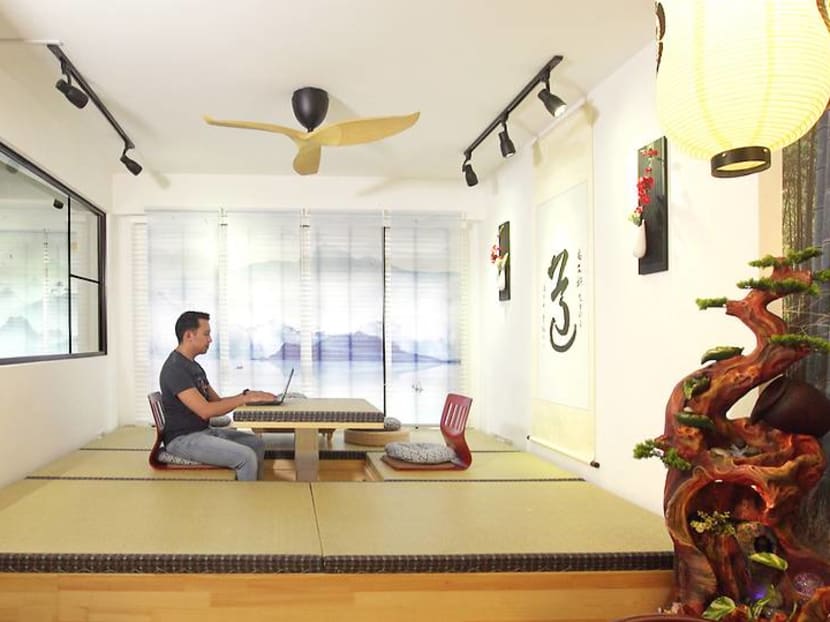
Amalyasa MK's Japan-inspired home was a DIY project that cost S$15,000. (Photo: Amalyasa MK)
Inspired by his frequent holidays in the Land of the Rising Sun, healthcare professional Amalyasa MK decided to transform his 990 sq ft HDB flat in Sengkang into his very own “little Japan”.
He envisioned a modern Japanese-inspired home that would cater to his needs and interests by way of an entertainment room, a home gym, and an “onsen”. Yes, you read that right.
But at the same time, he was constrained by a “very low budget (of) only S$15,000”.
That didn’t deter Amal, who decided to design it all by himself and do his home renovations DIY-style.

“The whole process of designing Nippon House took place in eight phases,” he shared. “I sat at various corners of the apartment and tried to visualise: What will I want to see here? What kind of Japanese elements do I want to bring in?”
To keep costs low, Amal ordered all of his furniture and decor items from Chinese e-commerce giant Taobao, which wasn’t an easy task considering he doesn’t read Mandarin and thus had to rely heavily on Google Translate.
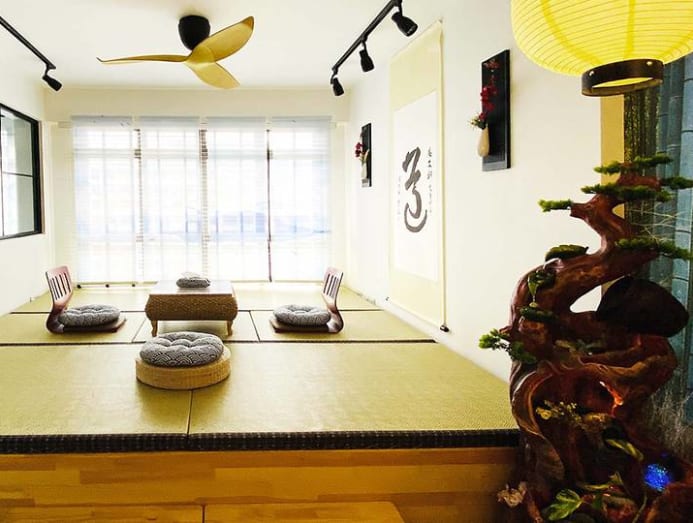
Some of the items he ordered were so big that they could not fit into the lift, so he had to call on friends to help carry these – up 14 flights of stairs!
The very first thing you notice about Amal’s home is the front door, which is covered in wallpaper featuring a traditional blue-and-white Japanese geometric wave pattern called seigaiha.
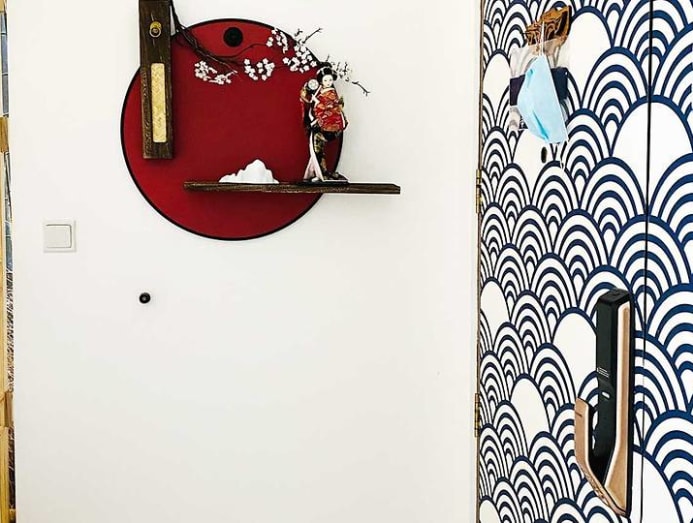
The pattern of layered concentric circles creates arches, symbolic of waves or water and represents surges of good luck, while signifying power and resilience. “It gives the feeling that this home is different from every other home,” said Amal.
READ: How a nostalgic couple brought 'old Singapore' into their new 700 sq ft BTO flat
The front door opens onto a shoji screen, which provides privacy without obstructing natural light. “It gives the apartment an air of mystery, and serves as a barrier, a partition, so people outside cannot see into the apartment,” he explained.
Upon entering, the first thing that catches visitors’ eyes, is a large calligraphy painting mounted above a Japanese altar table displaying decor items such as a samurai sword, a straw-covered miniature sakedaru (sake barrel), a folding fan, and a row of daruma, which are hollow, round, Japanese traditional dolls modelled after Bodhidharma, the founder of the Zen tradition of Buddhism.
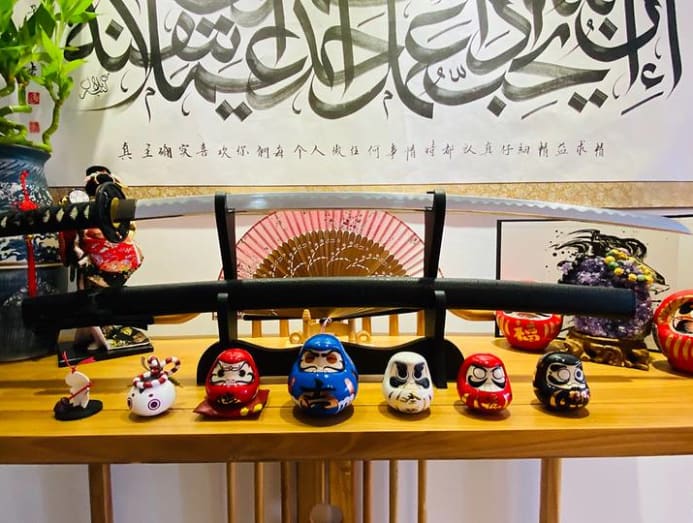
“Elements of Japanese culture I adopted and put inside Nippon House include a katana sword relating to the samurai, and large calligraphy pieces typically seen in ryokan and traditional Japanese homes,” he said.
There are also noren (door curtains) on every door, which is a quintessential Japanese decor element that’s been in use since the Heian period to keep houses cool in summer, or to retain heat during colder weather. The ones Amal chose feature the iconic wave motifs from 19th century woodblock prints of famed Japanese ukiyo-e artist Hokusai.
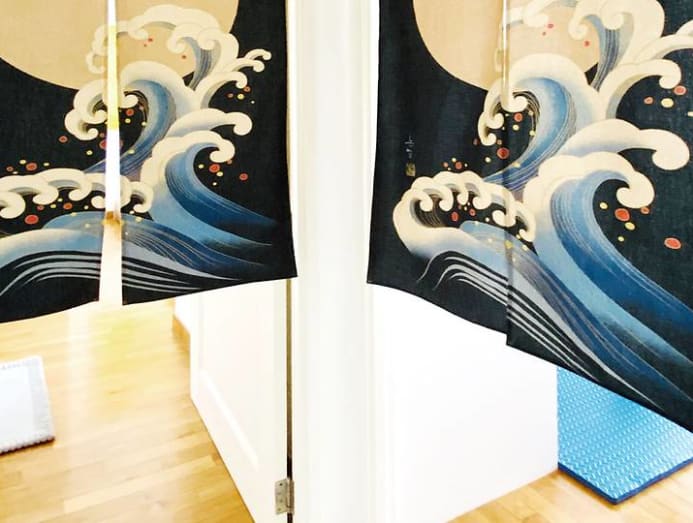
READ: Transforming a 517 sq ft condo into a colourful, cosy home fit for a busy bachelor
To create a visual flow throughout, Amal installed fabric panels featuring a watercolour scene of misty mountain ranges as window treatments.
“Japan has such a fabulous view of nature. Since we don’t have that in Singapore, I recreated it by using these blinds,” he explained.
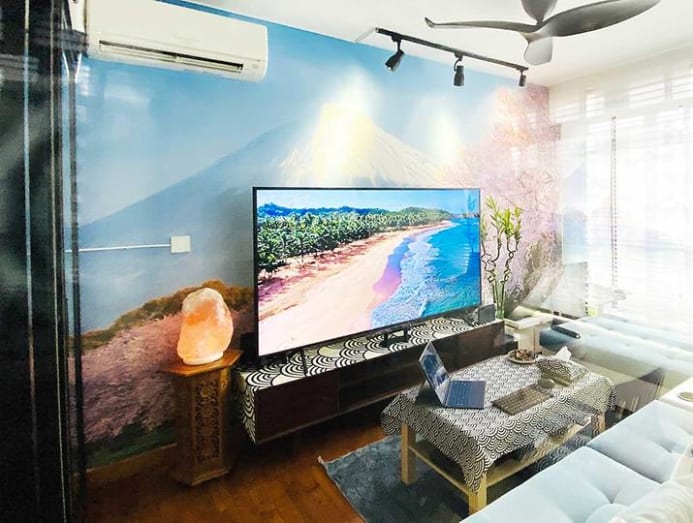
At the same time, every single room in Nippon House features a different design.
The dining area channels Kyoto, with an entire wall bearing a large wall-to-ceiling photo-realistic mural featuring Arashiyama’s famed bamboo forest.
“I wanted to create a space where you feel like you are dining outdoors in nature,” explained Amal, referencing the Japanese affinity for shinrin-yoku, or forest bathing.
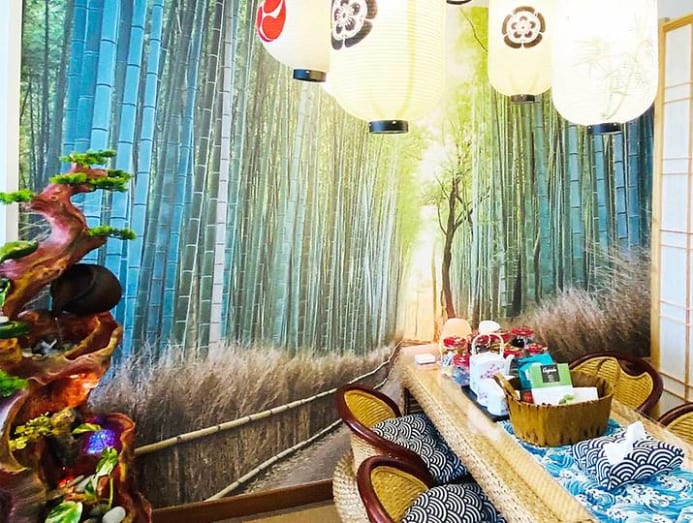
A rattan dining set, a jute carpet, and a bonsai-inspired water feature help create an aura of serenity and meditative calm. A “chandelier” of Japanese paper lanterns featuring sakura and bamboo motifs sway gently overhead. “It really brings a whole feeling that this is a Zen room,” he said.
READ: How a family of film buffs set up a mini-movie theatre inside a 990 sq ft BTO flat
Next to it is an austere tatami room. Built onto a raised wooden platform, it offers hidden storage below and conceals a surprise: The middle tatami mat raises up to become a horigatsu, a table with a recessed floor underneath for your legs, a common feature in traditional Japanese restaurants.
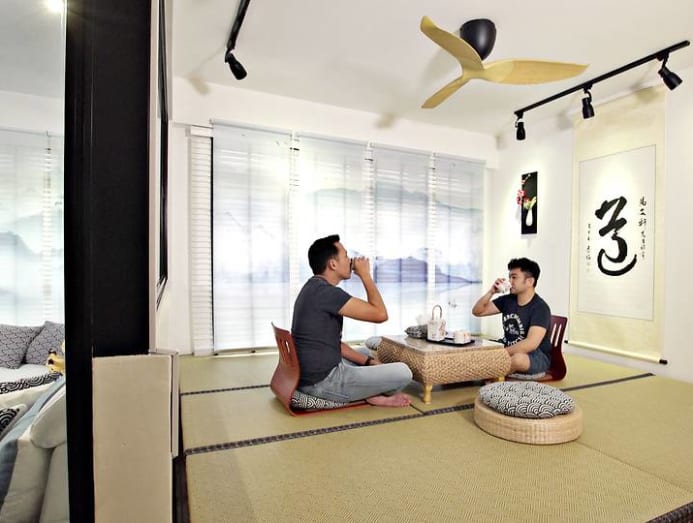
The entertainment room sees an entire wall covered with a photo-realistic mural of Mount Fuji. “It creates the feeling that I am still in Japan,” he quipped.
Meanwhile, the focal point in his master bedroom is six art panels featuring a sunset scene with sakura blossoms.
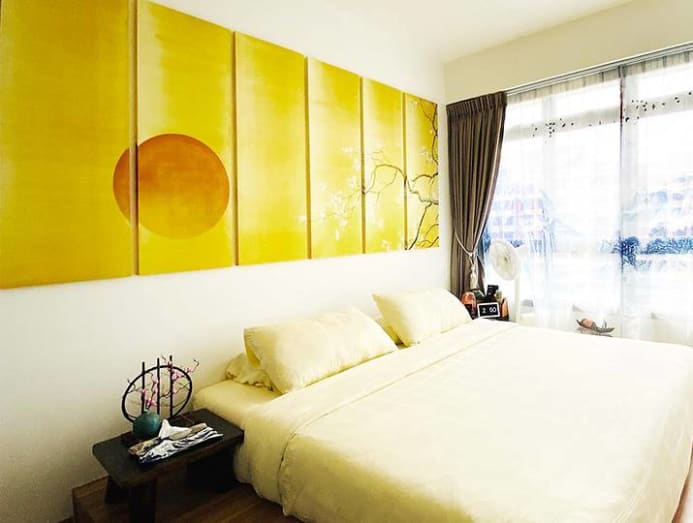
“I call it the Kawaguchi Room. Kawaguchi has a very sentimental meaning for me because it’s the very first place I visited on my first trip to Japan.” Instead of a bedframe, he opted for a mattress atop a wooden storage platform.
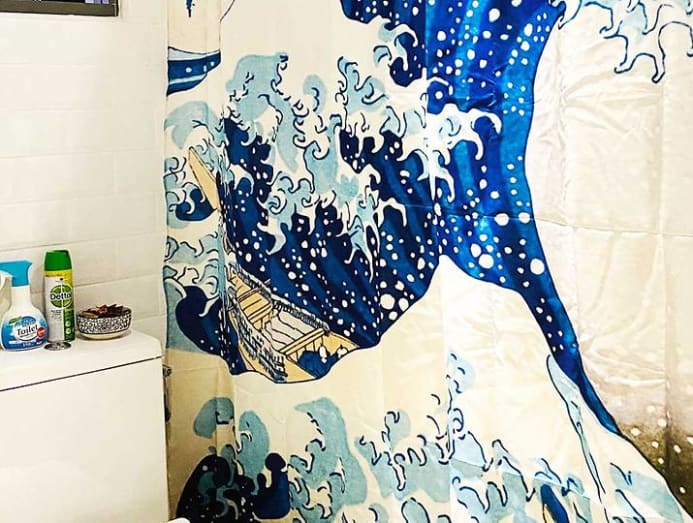
Finally, a Japanese-style home wouldn’t be complete without a traditional bathhouse, so Amal created his own onsen by installing an ofuru – a cedarwood bathtub – and wooden flooring.
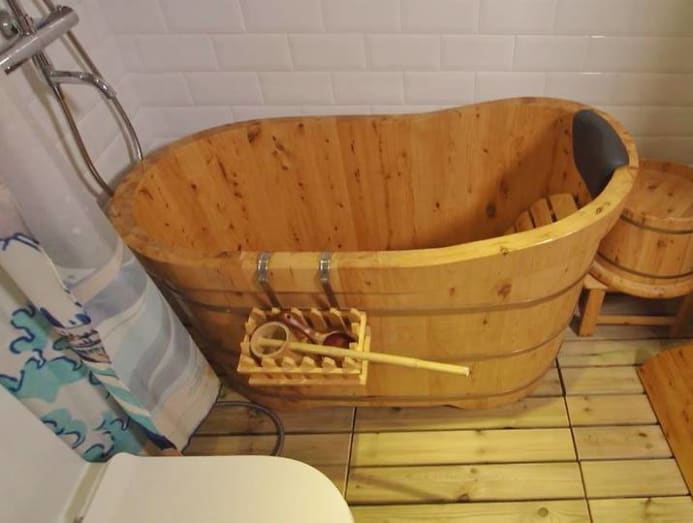
“This space is very special to me,” he said. “I spend my time soaking, or even having a steam … it definitely helps me relax. After a hard day’s work, challenges faced, coming back here and the feeling of being in Nippon helps me recover and calms my mind down.”





